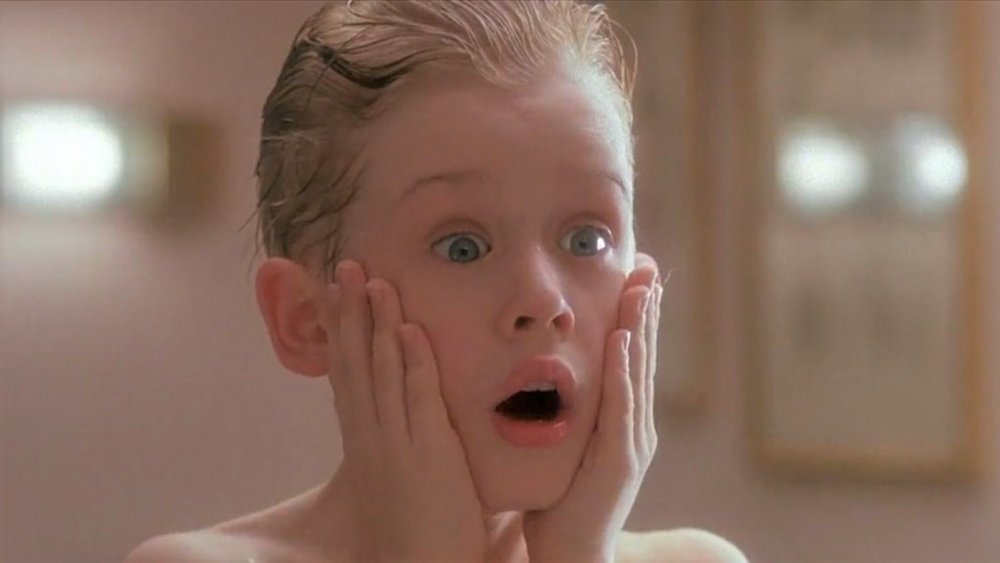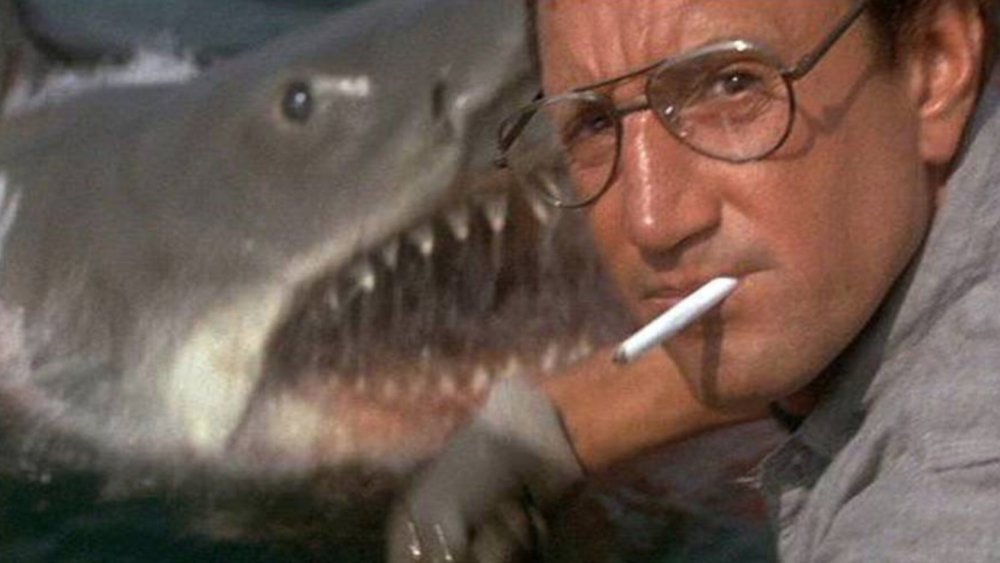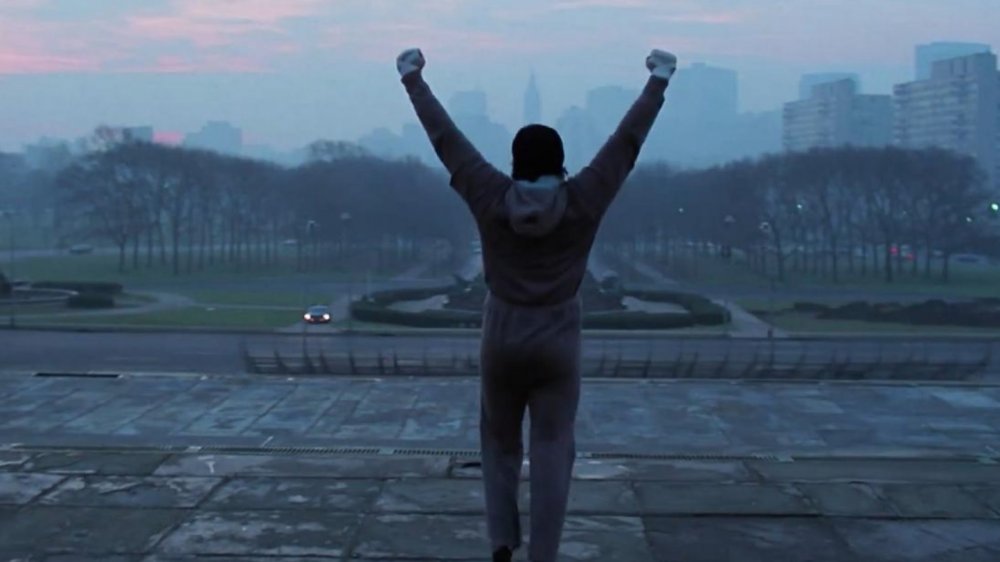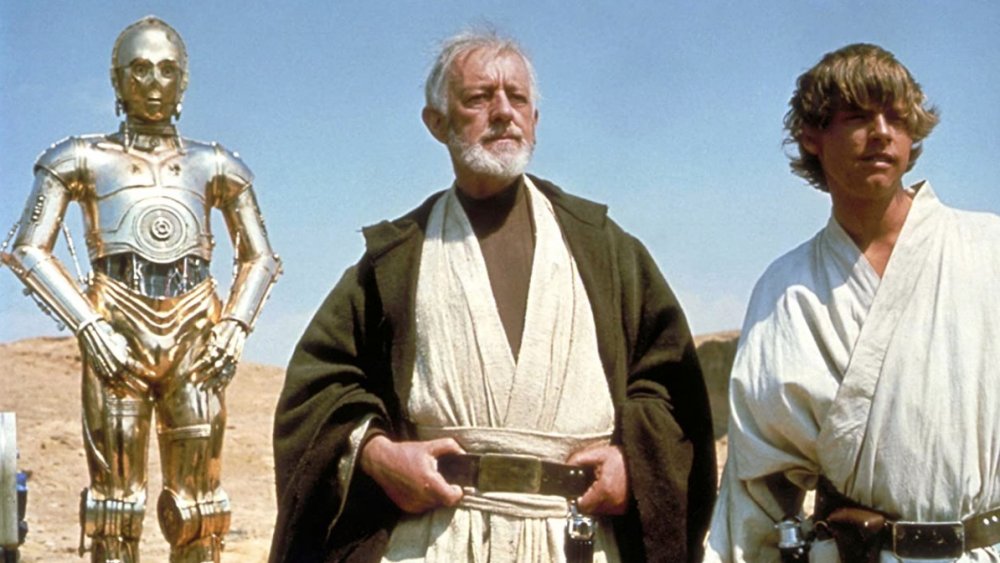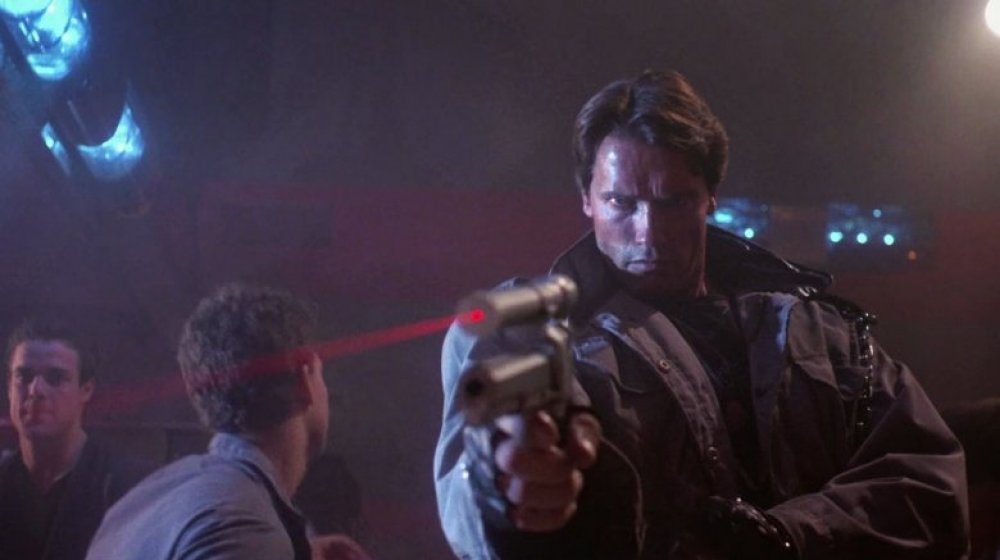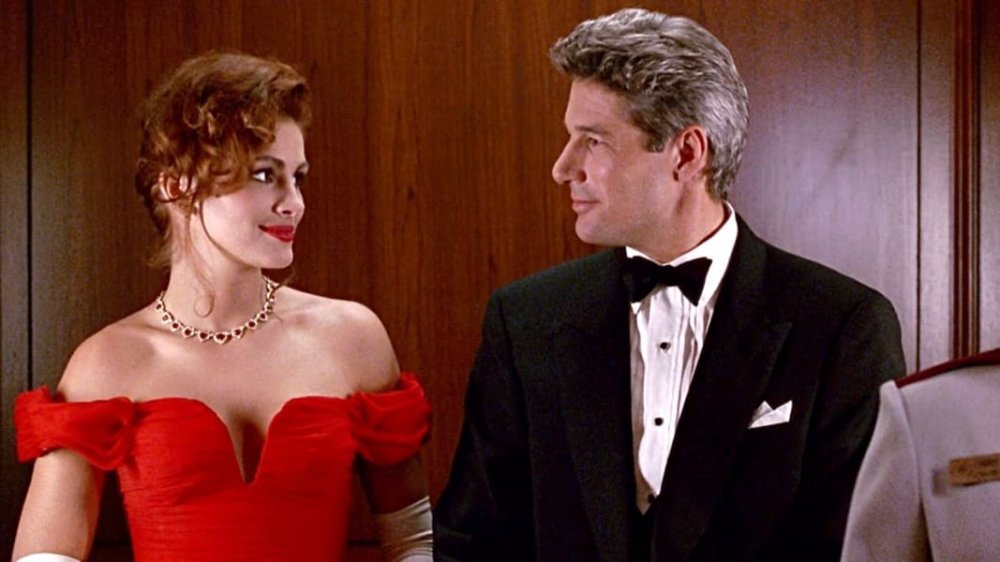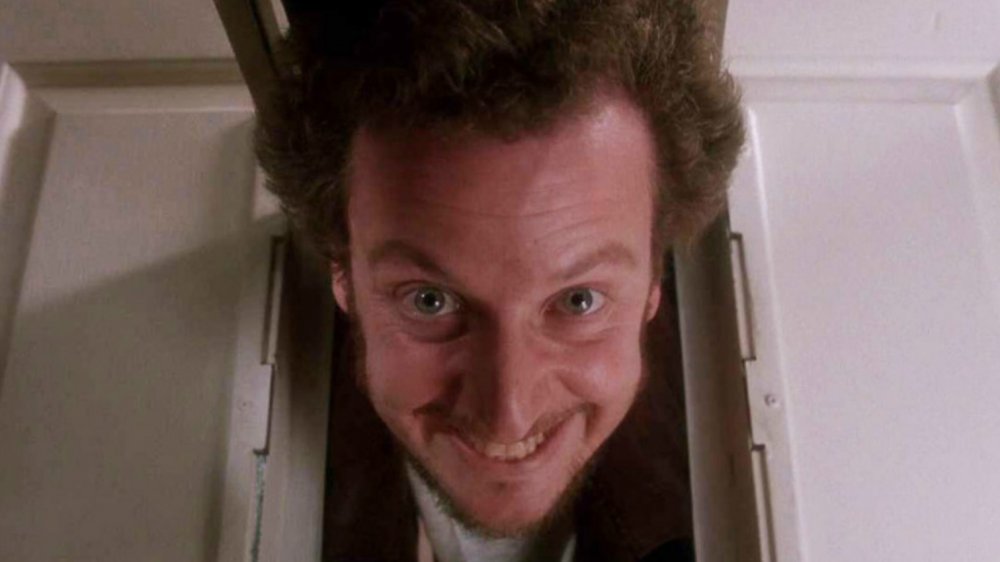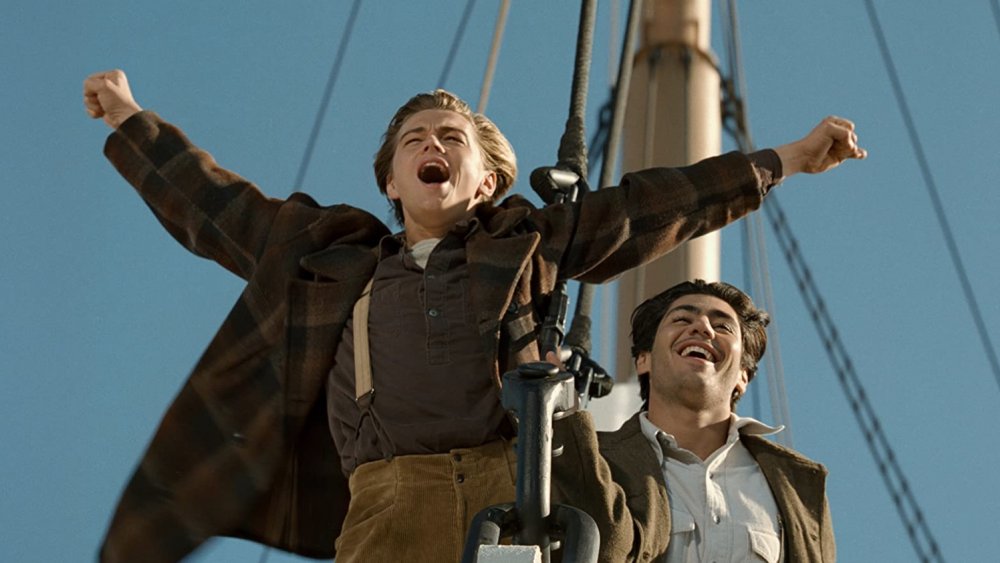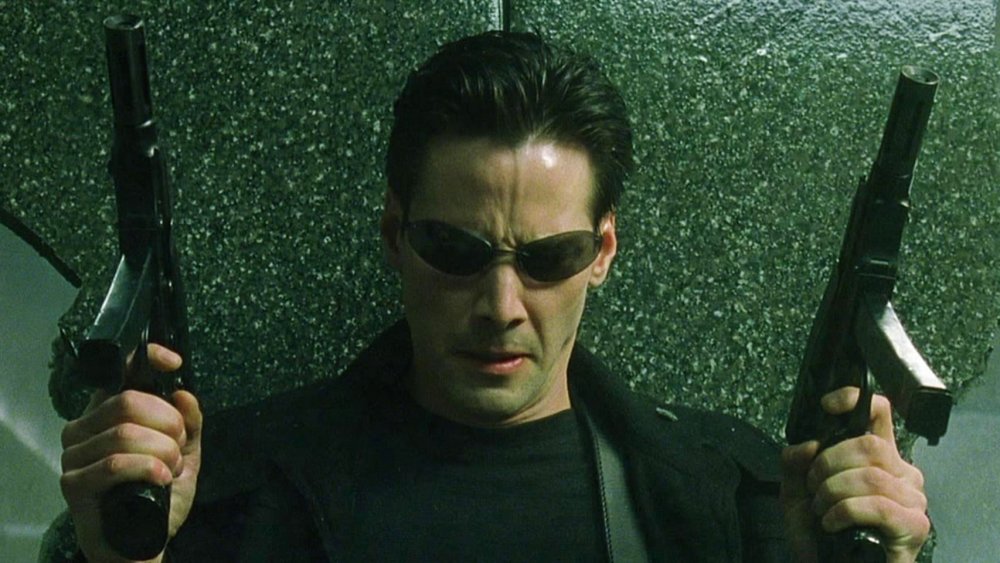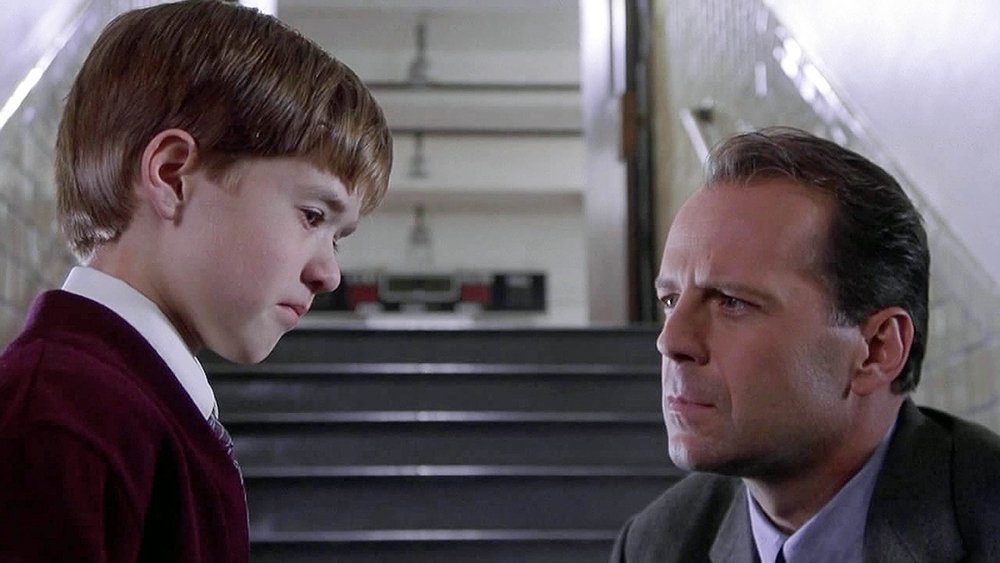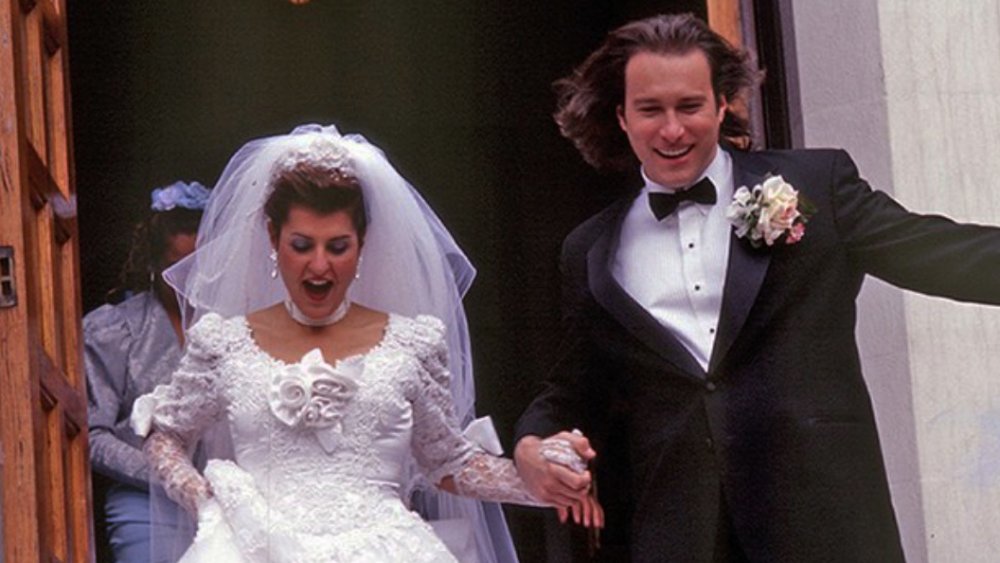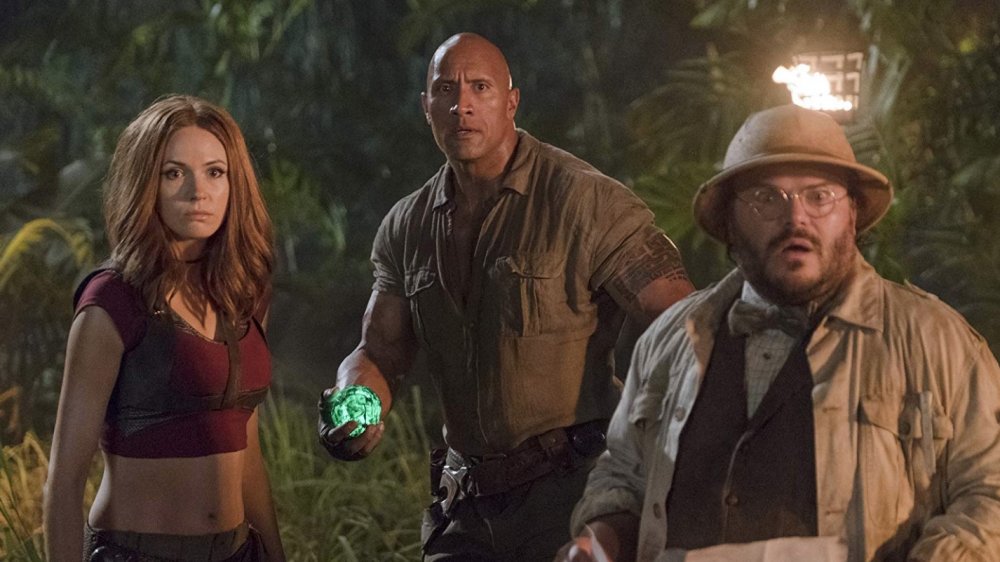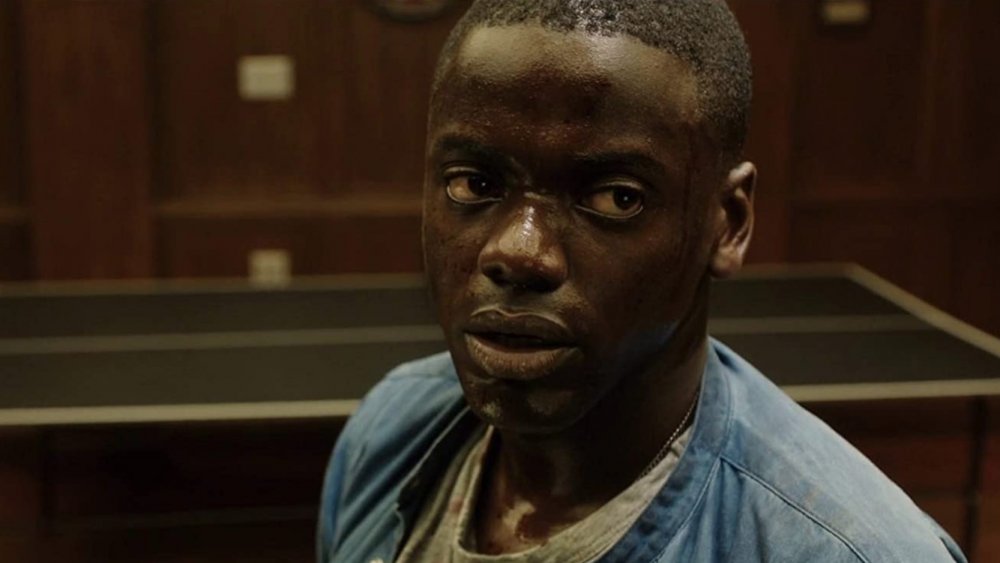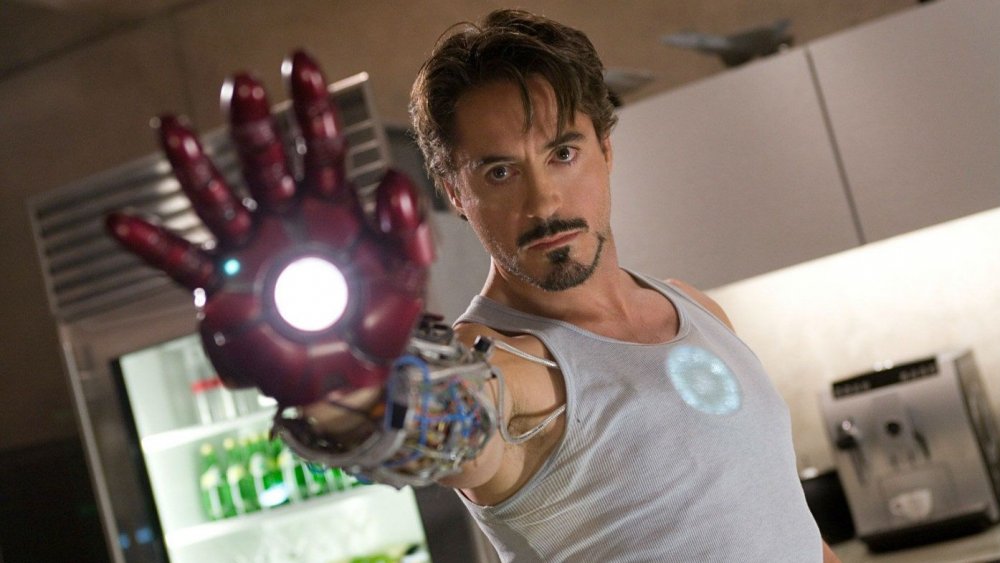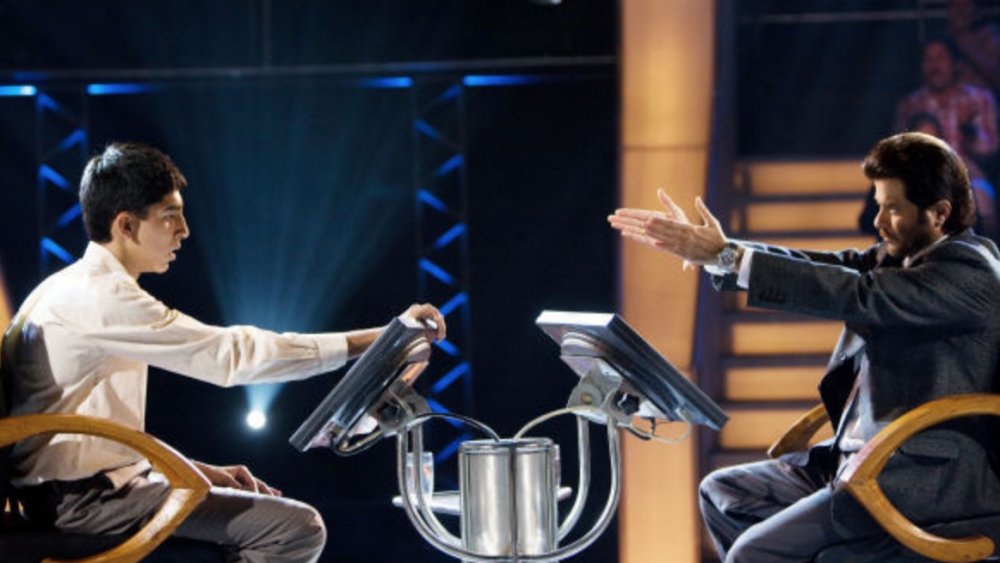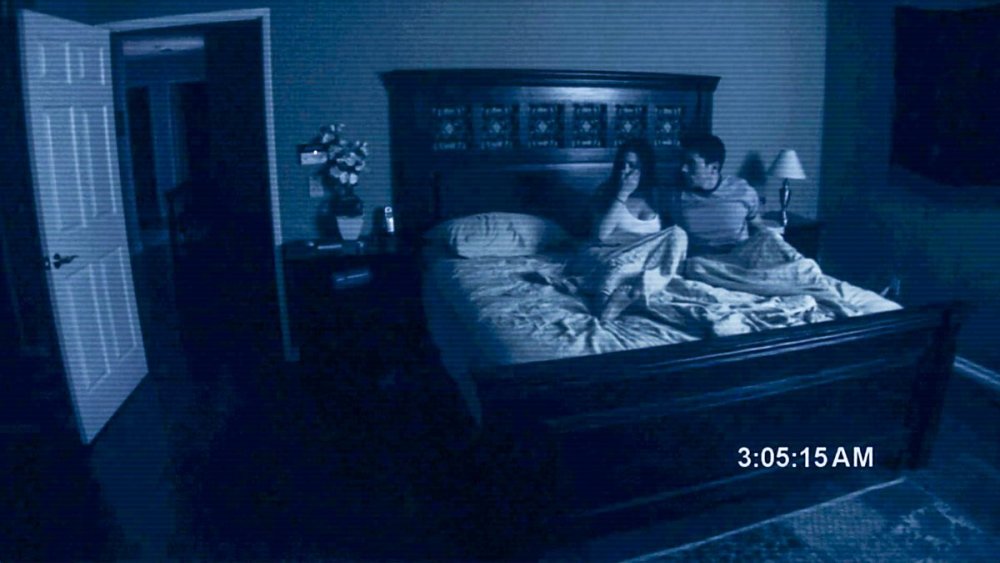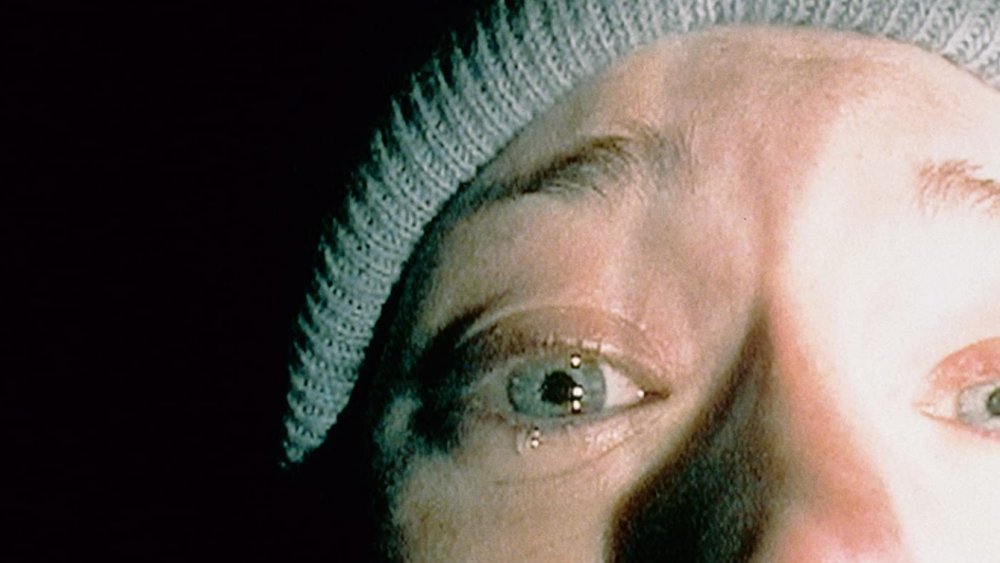Movies That Became Unexpected Blockbusters
Believe it or not, not every movie is meant to be a blockbuster. Sure, movie studios never make a movie hoping it bombs (this isn't Mel Brooks' The Producers). But just because a movie is greenlit, that doesn't mean it's meant to make green, or at least not enough to buy a small country. You can tell a movie is meant to be a blockbuster based on its budget. If the budget has more zeros than a broken calculator, the movie studio expects to make back its investment and then some. Unfortunately for movie studios, there are tons of would-be blockbuster films that have bombed, some so badly that they've ended careers and even put movie studios out of business.
But what about the opposite — movies that were never meant to become blockbusters but did? These movies aren't the tentpoles that movie studios planned for, but instead, they're pleasant little surprises (actually, make that pleasant huge surprises). There are more unexpected blockbusters than you may realize, and many of them have even gone down in history as some of the greatest and most successful movies of all time. Some unexpected blockbusters were big hits that came from tiny budgets, some way over-performed based on industry expectations, while others were out-of-control productions that could've killed careers but broke records instead. These movies surprised their studios, and they may surprise you, too. Here are movies that became unexpected blockbusters.
Jaws was an unexpected blockbuster that saved Spielberg's career
Steven Spielberg is the first and only director in the $10 billion club, so if his filmography were a franchise, it would be the third biggest, behind only Marvel and Star Wars. Dude has the Midas touch, but his career almost sank like a stone ... or perhaps we should say like a robotic shark.
In the mid-1970s, Universal Pictures sent the hotshot, 26-year-old director of The Sugarland Express and a few episodes of Night Gallery to Martha's Vineyard to film an adaptation of Peter Benchley's shark novel, Jaws, which had spent 44 weeks on The New York Times bestseller list and Universal had spent $575,000 to acquire. Spielberg received a fairly modest $3.5 million budget, which spiraled completely out of control during the legendarily troubled shoot, and according to PBS, that budget eventually rose to $12 million.
With budget overruns like that, Spielberg's shark movie had to make money or his directing career would be sleeping with the fishes. Jaws opened to $7 million and swam its way to $260 million domestic and $470 million worldwide (more than a billion in today's dollars), a totally unexpected sum that launched Spielberg's career and established the summer movie season that he would dominate for decades to come.
Rocky goes the distance
Chuck Wepner shocked the world when he nearly went a full 15 rounds with Muhammad Ali, becoming one of only a few fighters to ever knock the champion down. The most important person Wepner inspired was aspiring actor Sylvester Stallone. By this point, Stallone's career pretty much only included a starring role in the 1974 bomb The Lords of Flatbush, a supporting role in B-picture Death Race 2000 in 1975, and a lead role in soft-core film The Party at Kiki and Studs in 1970 (later renamed Italian Stallion). Pushing 30 and living in a seedy, run-down apartment, Stallone created his own big break and, inspired by Wepner, penned a screenplay in three days called Rocky, the story of a down-and-out Philly boxer.
Producers offered the flat-broke Stallone $360,000 for what they saw as a star vehicle for James Caan, Burt Reynolds, or Ryan O'Neal, but Stallone insisted he be the star. Stallone got his wish but not a big budget, as Rocky was filmed for a featherweight sum of $1 million in just 28 days. The inspiring underdog story caught fire with moviegoers who were burned out by the nihilism of the 1970s New Hollywood, and it went the distance with a $117 million domestic box office (of which Stallone earned ten percent). Rocky launched a franchise that includes the Creed films and has earned $1.5 billion worldwide. Thanks to this unexpected blockbuster, Stallone went from eye of the tiger to seeing dollar signs in his eyes.
Star Wars gives a new hope to George Lucas
By the mid-1970s, George Lucas had one hit and one bomb under his belt. American Graffiti earned $140 million worldwide in 1973, which helped clean the stain left by his feature film debut, the sci-fi failure THX-1138, a movie that made an atrocious $5,000 in 1970. So 20th Century Fox probably wasn't enthused by Lucas' desire to film another sci-fi movie, this one a fantastic space opera in the style of the Buck Rogers and Flash Gordon serials that Lucas loved as a kid.
Star Wars received an $11 million budget, and no stars, save Oscar-winner Alec Guinness. Fox feared they had a space turkey on their hands when only a handful of theaters booked it. So Fox got creative and forced theaters to show Star Wars if they wanted to release The Other Side of Midnight, their surefire summer hit. Still, Fox expected Star Wars to get trounced when it opened in the early summer of 1977 against Smokey and the Bandit, starring one of the biggest stars of the 1970s, Burt Reynolds.
While Star Wars lost that weekend, it opened to a surprising $1.5 million in limited release — then demand kept growing. Star Wars warp-sped its way to a mind-boggling $307 million during its initial 18-month run, a tally which has grown considerably during subsequent re-releases. Today, Star Wars is the second highest-grossing movie of all time, adjusted for inflation. Not even George Lucas expected that.
Schwarzenegger amazes in The Terminator
Arnold Schwarzenegger was an Austrian-born bodybuilder who found success in the Conan movies, but his dreams of A-list movie mega-stardom seemed stalled thanks to his thick accent and even thicker pectorals. As for James Cameron, he was the director of B-picture Piranha 2: The Spawning. So maybe this pairing wasn't the next John Ford-John Wayne, Akira Kurosawa-Toshiro Mifune, or Martin Scorsese-Robert De Niro, but it was perfect for the mid-1980s.
Cameron had an idea for a movie inspired by visions he had during a fever dream in Rome. He penned the script for The Terminator, but with the killer fish movie as his sole credit, he sold the rights for only $1 on the condition he be hired as the director. Meanwhile, Schwarzenegger initially came in to read for the part of Kyle Reese, the time-traveling, robot-fighting rebel sent back to 1984 to protect Sarah Connor from the evil machine from the future. It made sense, as Arnie had previously played good guys up to that point, but both Schwarzenegger and Cameron wisely realized that a man built like a mountain made more sense playing the unstoppable robot.
Cameron was given a minuscule $6.4 million budget, but The Terminator made $38 million domestic and $78 million worldwide, and it launched a $2 billion franchise. Schwarzenegger was established as one of the biggest action movie stars ever and Cameron began his journey to become one of the most bankable directors ever.
Pretty Woman made a pretty penny
In 1990, Richard Gere was a well-known actor who hadn't had a big hit in eight years since An Officer and a Gentleman in 1982. Julia Roberts had gotten attention in Mystic Pizza, but her biggest hit was a supporting role in the ensemble picture Steel Magnolias. Movie producers knew she would be something special one day, it was only a matter of time. And that time was 1990.
Walt Disney Pictures (via Touchstone Pictures, their brand for R-rated movies) probably wasn't expecting too much from the story of a wealthy tycoon who courts a "hooker with a heart of gold," a now cliche setup we have a hard time thinking would be made today. Pretty Woman was released in the slow springtime month of March and given a $14 million budget. The film opened strong with $11 million, but as impressive as that was, it paled in comparison to what the film would become, as Pretty Woman wound up climbing to $178 million stateside and $432 million worldwide, making it the fourth biggest hit of the year.
Pretty Woman proved movie producers' suspicions correct — Julia Roberts was money. While her star has dimmed in recent years, she became the first female to score a $20 million salary for Erin Brockovich in 2000, and she beat her own record with $25 million for Mona Lisa Smile in 2003. In other words, Roberts wound up earning double the entire budget for Pretty Woman.
Home Alone was an unexpected blockbuster that brought down the house
The actor whose movie grossed the most in 1990 wasn't Kevin Costner, Bruce Willis, Arnold Schwarzenegger, or Tom Cruise. Instead, it was a 10-year old named Macaulay Culkin. When Culkin stole the show from John Candy (which we would've thought was impossible) in 1989's Uncle Buck, the film's writer and director John Hughes knew he had something special in the precocious kid. And Hughes knew talent. As arguably the most prolific filmmaker in the 1980s, Hughes not only directed classics like Ferris Bueller's Day Off and Planes, Trains, and Automobiles, he also helped launch the Brat Pack in films like The Breakfast Club and Sixteen Candles,
Yet Hughes' biggest hit by far, and arguably his most lasting contribution to the culture, was the film he didn't even direct. Hughes wrote Home Alone with Culkin in mind, but he passed directorial duties on to up-and-comer Chris Columbus so he could focus on Curly Sue. With a reasonable $18 million budget, Hughes and 20th Century Fox hoped they would have a modest holiday hit on their hands. Nobody could've imagined what would happen. Home Alone made back its budget in its opening weekend and kept making money, staying in the top ten for 20 weeks. Home Alone took home $285 million domestic and $476 million worldwide, making it one of the biggest hits ever at the time.
Titanic sails into the record books
James Cameron is a man who likes big budgets. Cameron's True Lies was the first movie to have a $100 million budget, and three years later, he directed a movie that made True Lies look like an indie flick. Despite being known for macho action movies like The Terminator and Aliens, Cameron set out to make an epic love story set aboard the famous ocean liner Titanic, starring two actors who'd never had a huge hit: Leonardo DiCaprio and Kate Winslet. His asking price? $190 million, nearly double True Lies' price tag.
It's no wonder industry analysts believed Titanic was just as doomed as the ocean liner, especially when the film's budget sailed to $200 million. Some studio heads believed the film could break even at best, while most thought the film making money was mathematically impossible. These suspicions seemed to be confirmed when Titanic opened to $28 million. But when the movie made even more its second weekend, it became clear something was happening. Despite never making more than $40 million in a weekend, Titanic stayed in the top ten for 26 weeks straight (with 15 at #1) to earn $600 million domestic and $1.8 billion worldwide, becoming the most successful movie ever. Subsequent releases have brought Titanic to a $2.2 billion global tally, the third-highest ever.
The Matrix's success defies reality
Believe it or not, science fiction tends to be pretty hit or miss at the box office. Sure, some of the highest-grossing movies of all time like Star Wars, Avatar, The Avengers, and Jurassic Park qualify as "sci-fi." But the biggest flops of all time, like The Adventures of Pluto Nash and John Carter, are sci-fi pics, too. So if you make a science fiction movie, you're taking your fate into your own hands, especially if it's an original sci-fi film not based on a popular intellectual property.
Such was the case with The Matrix, a movie famously turned down by the most bankable movie star at the time, Will Smith, who chose to do Wild Wild West instead. Sound crazy? Remember, by that point, the Wachowskis only had one film to their credit, the $3.8 million bomb Bound, and they wanted to make a trippy, heady, sci-fi flick in which reality as we know it is really a fabrication created by computers that are harvesting humans as batteries in a post-apocalyptic nightmare world. Oh yeah, there was slo-mo martial arts too.
So yeah, you can see why Smith was skeptical. Shockingly, Warner Brothers liked it and gave the directors $63 million to make the movie. Even so, the studio was caught off-guard when the ultra-violent, high-concept movie made $27 million its opening weekend, then earned a blockbuster $171 million domestic and $465 million worldwide, making it one of the highest-grossing, R-rated movies ever at the time.
The Sixth Sense was a shocking and scary surprise
Whether you love or hate the writer-director famous for his supernatural tales and twist endings, M. Night Shyamalan is one of the few directors who can open a movie based on his name alone. But in the late 1990s, Shyamalan was simply the guy who wrote Stuart Little and directed Wide Awake, a box office bomb starring Rosie O'Donnell as a nun.
The Sixth Sense changed all that, but it almost never happened. His script was originally a serial killer film inspired by The Silence of the Lambs, in which a crime photographer experiences visions of the victims he takes pictures of. If that sounds like a million different Ashley Judd movies to you, you're not alone. Thankfully, ten drafts later, Shyamalan crafted the script we know and love. His screenplay made waves in Hollywood, attracting A-list actor Bruce Willis to star and getting Walt Disney Studios (under their now defunct Hollywood Pictures brand) to cough up $40 million to make it.
The Sixth Sense's success was even more shocking than its ending, as it opened to an impressive $26 million and legged it out to $293 million domestically and $672 million worldwide. The Sixth Sense was second only to Star Wars Episode I: The Phantom Menace at the domestic box office for 1999, shockingly topping Toy Story 2 and Austin Powers 2: The Spy Who Shagged Me.
My Big Fat Greek Wedding takes the cake
Weddings can get pretty expensive. Just ask Nia Vardalos, whose My Big Fat Greek Wedding cost $5 million. But for a film? Yeah, that's dirt cheap.
Second City alum Vardalos had a successful one-woman show based on her life of growing up in a big Greek family in Canada and marrying her non-Greek husband. Fortunately for Vardalos, it was love at first sight for one of her audience members, the Greek actress Rita Wilson, wife of Tom Hanks. Wilson and Hanks could relate to the story and offered to produce the picture. Studios were interested, but only if they could get a more bankable star and maybe a family from a less niche ethnic background (My Big Fat Italian Wedding, perhaps?). Wilson and Hanks would have none of it and sacrificed a big budget for sticking true to Vardalos' vision.
Small studio IFC Films committed $5 million to the picture and opened it in less than 300 theaters, where it opened at $597,362. But IFC's word-of-mouth release strategy paid off when My Big Fat Greek Wedding walked down the aisle with $241 million domestic and $368 million worldwide. While My Big Fat Greek Wedding never hit #1 at the box office (making it the second-highest grossing movie to never do so), it is the highest-grossing romantic comedy ever, beating What Women Want by almost $60 million, despite costing only seven percent as much.
Jumanji was an unexpected blockbuster that made a lot of green
Jumanji: Welcome to the Jungle may be the most unlikely franchise reboot in history. It's a loose sequel to the well-remembered classic Jumanji, a film that scored $100 million domestically and $262 million worldwide on a $65 million budget. Compare this to Jurassic World, the much-anticipated sequel to what was already one of the most successful franchises ever. Moreover, Jumanji scored at the box office largely thanks to the late Robin Williams' star power.
Sony Pictures played it safe with the sequel, which opened 22 years after the first, making it respectful to the original but not requiring you to have seen it. It also starred action-comedy mega-star Dwayne Johnson, with likable leads Jack Black, Kevin Hart and Karen Gillan. On top of that, it had a $90 million budget, which is modest by modern blockbuster standards. And then Jumanji: Welcome to the Jungle opened to $36 million, which would've been the death knell in the summer but was fine for the holidays. The movie had good fortune too, as it served as counter-programming for the unexpectedly divisive Star Wars: The Last Jedi, which it overtook at the box office on January 1.
Jumanji: Welcome to the Jungle legged it out to $404 million domestic and $962 million worldwide, beating 2002's Spider-Man to become Sony's biggest domestic hit ever, unadjusted for inflation. Sony was hoping for a hit. They got a truly massive blockbuster.
Get Out gets rich
If someone told you in 2016 that a MadTV alum would write and direct one of the most critically acclaimed and commercially successful horror films of all time, you'd probably laugh — just the reaction Jordan Peele would've wanted. Peele made a name for himself as the co-star and co-creator of Comedy Central's Key & Peele, alongside Keegan-Michael Key. Key and Peele parlayed their Comedy Central stardom with 2016's box office bomb, Keanu, which made $20 million worldwide on a $15 million budget. An inauspicious debut like that would usually spell disaster, but Peele took his career in a different direction.
Peele convinced Blumhouse to spend the super low budget of $4.5 million on his experimental, social commentary horror film Get Out. With a budget that low (less than a third of Keanu's cost), Blumhouse probably figured, "Sure, why not?" Horror films are known for making lots of money based on their low budgets and loyal fanbase. But while Blumhouse was expecting Get Out to make back its money, it wasn't expecting it to open to $33 million. Horror films are notoriously front-loaded, so the studio would've been happy if the final gross wasn't much more than that, but Get Out's word-of-mouth drove its box office to an incredible $176 million domestic and $255 million worldwide. No wonder Peele got his budget bumped to a still modest $20 million for his 2019 followup, Us.
Iron Man was made of gold
The Marvel Cinematic Universe is the most successful franchise ever, spawning 27 films so far and earning $22 billion worldwide. And it's all thanks to a guy who was once known as "box office poison." Director Jon Favreau was taking a big risk by casting Robert Downey Jr. as Tony Stark/Iron Man. RDJ hadn't had a huge hit well into his 40s, had been fired from Ally McBeal, couldn't get cast in Melinda & Melinda due to insurance issues, and even spent time behind bars. It sounds crazy now, but Marvel reportedly didn't want Downey for the role of Tony Stark in Iron Man (a part once eyed by Tom Cruise), but Favreau knew Downey was the man for the job.
While Iron Man had historically been a C-list superhero — compared to A-listers like Batman, Spider-Man, Superman, and Wolverine — Paramount felt comfortable letting Favreau have a reasonable $140 million budget and RDJ in the starring role. The gamble paid off. While Paramount hoped for a hit, Iron Man exceeded all expectations when it opened to $98 million. Iron Man was made of solid gold, earning $318 million domestic and $585 million worldwide, second only to The Dark Knight and out-earning the much-anticipated Indiana Jones and the Kingdom of the Crystal Skull at the domestic box office for 2008. More importantly, it launched the biggest crossover franchise ever. Not bad for box office poison.
Slumdog Millionaire makes millions
English filmmaker Danny Boyle has long been well-respected as one of the most versatile directors in the industry, directing horror (28 Days Later), drama (Trainspotting), sci-fi (Sunshine), and even a family-friendly dramedy (Millions). While Boyle had some flops on his resume, such as Leonardo DiCaprio's bomb-bastic Titanic follow-up The Beach, he was pretty good about earning back his movie's modest budgets. However, while Boyle had directed some hits, he'd never had a genuine blockbuster.
That all changed in 2008 with a film that at first glance may seem like Boyle's most unlikely blockbuster. Slumdog Millionaire starred a cast of unknown Indian actors, was set in the slums of Mumbai, and was about an impoverished teenager who reflects on his life while competing on the Indian version of Who Wants to be a Millionaire? It's the kind of movie that normally would've had a nice run in art-house theaters before it was eventually remade starring Hollywood actors.
But Fox Searchlight Pictures saw something in the story and gave the film a $15 million budget in the hopes it would pick up traction on the awards circuit and succeed overseas, especially in India. And Slumdog Millionaire opened strong with $360,000 in limited release in just ten theaters. Thanks to strong reviews and word-of-mouth, Slumdog Millionaire became a multi-millionaire, eventually expanding to more than 2,000 theaters, finishing its run with $141 million domestic and $378 million worldwide and earning back 25 times its budget.
Paranormal Activity's success was supernatural
Horror movies are known for their small budgets, but even for this genre, $15,000 is pushing it. Yet Oren Peli spent that amount on his 2007 supernatural horror film Paranormal Activity. In the movie, a couple becomes disturbed by a demonic presence, which you'd think their real estate agent would have mentioned during the tour. Like The Blair Witch Project, Paranormal Activity was a found footage film that derived its scares from the fact that it seemed like it was really happening. Paramount Pictures picked up the rights to the film and followed a clever, unconventional marketing strategy. While most horror films open wide and try to recoup their budget ASAP, Paramount released Paranormal Activity in only 12 theaters, where it made $77,873. And as Paramount expanded the film's theater count, they released audience reaction trailers (which became a tradition with subsequent sequels).
It was a clever idea. Audiences were used to having all of the scary moments from a movie ruined by the trailer, so why not show the audience reacting to the scary stuff instead? This slow-and-steady approach paid off. Thanks to word-of-mouth, Paranormal Activity scared up a supernatural $107 million domestic and $193 million worldwide gross. It also launched a six-film franchise that has earned $401 million stateside and $890 million worldwide on a combined budget of just $28 million. And technically speaking, the original film that started it all is the most profitable movie of all time, earning a 434,000 percent return on investment.
The Blair Witch Project was an unexpected blockbuster that scared up a ton of cash
You may think $60,000 sounds like a lot of money, but when it comes to movies, it's nothing. Heck, $60,000 is probably less than the catering budget for one day on Avengers: Endgame. Yet in 1999, the writer-director team of Daniel Myrick and Eduardo Sánchez made a movie for that amount of money ... and not just any movie but one of the most successful films of all time.
The Blair Witch Project is about three film students who vanish after traveling to the woods in Maryland to make a documentary about the local Blair Witch legend. The movie is assembled from their footage, and this groundbreaking "found footage" approach is what made The Blair Witch Project so terrifying. After all, it made moviegoers feel like the horrifying events in the film really happened. Thanks to a brilliant marketing campaign that made you think the story was actually real, The Blair Witch Project opened to $1.5 million, making back its budget and then some in only three days.
But The Blair Witch Project wasn't done yet. The film went on to spook up a supernatural $140 million domestic and $248 million worldwide, making it the tenth biggest hit of 1999, with a budget that was a fraction of the other films released that year (or any year). For example, the eleventh biggest hit of 1999, Notting Hill, cost $42 million. Most impressively, The Blair Witch Project became, dollar-for-dollar, one of the most profitable films of all time.
